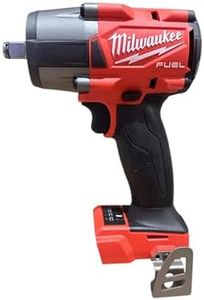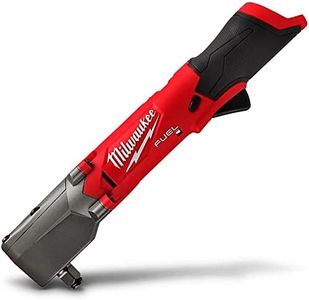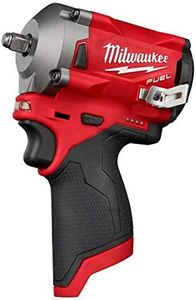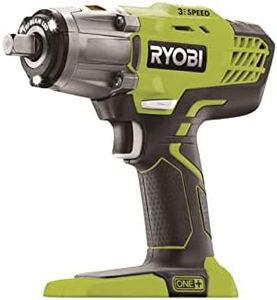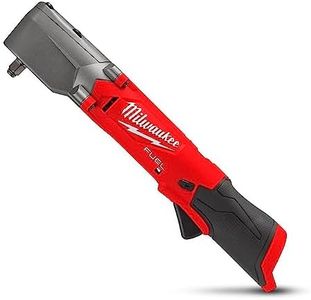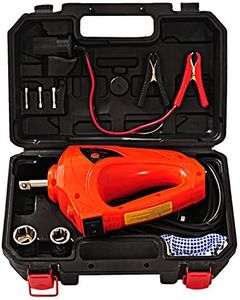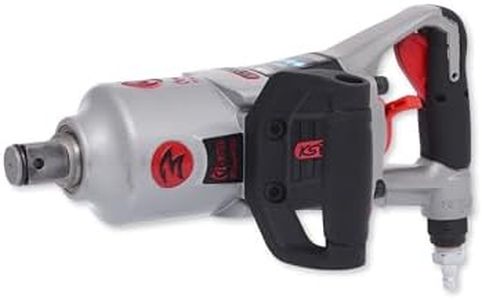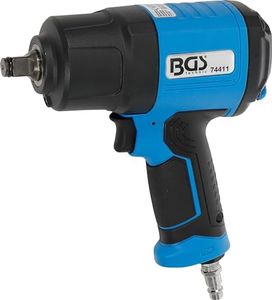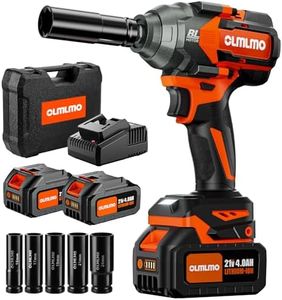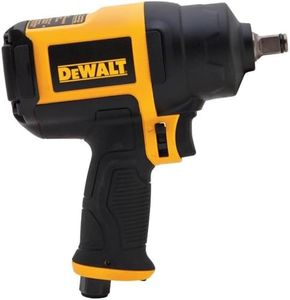We Use CookiesWe use cookies to enhance the security, performance,
functionality and for analytical and promotional activities. By continuing to browse this site you
are agreeing to our privacy policy
10 Best Corded Impact Wrenches
From leading brands and best sellers available on the web.Buying Guide for the Best Corded Impact Wrenches
If you’re looking to buy a corded impact wrench, it’s important to match your choice to the tasks you plan to tackle. These tools are designed for heavy-duty jobs where you need to loosen or tighten nuts and bolts quickly. Corded versions don’t run out of battery, which is great if you need steady power over long periods. To make an informed decision, get familiar with the main features and how they relate to your own needs, whether it’s car repair, construction, or occasional DIY tasks.Power (Amperage)The power of a corded impact wrench is usually measured in amperes (amps). Think of it as how strong the tool’s motor is. More amps mean the tool can handle tougher jobs for longer periods without struggling. Usually, basic wrenches are in the 6-7 amp range, suitable for lighter and occasional tasks like household fixes. Mid-range options with around 7-8 amps work well for most DIY car repairs and general use, while heavy-duty wrenches in the 8-12 amp range are best for frequent or commercial tasks involving stubborn nuts and bolts. Choose based on how tough your jobs usually are: go higher if you need more muscle for heavy-duty work, or stick to mid or lower range for occasional use.
TorqueTorque is a measure of how much turning force the wrench delivers, typically shown in foot-pounds (ft-lbs) or Newton-meters (Nm). More torque means the tool can handle harder-to-move bolts. Light-duty tools may offer around 150-200 ft-lbs, which is good for small projects or lighter automotive work. Medium torque (200-350 ft-lbs) covers most home and basic mechanic needs, like changing tires. For more demanding applications, such as professional vehicle repair or construction, you’d want higher torque, sometimes above 400 ft-lbs. Decide on the torque by considering the most stubborn bolts you expect to deal with. It's better to have a little more torque than necessary than too little.
Impacts Per Minute (IPM)Impacts per minute (IPM) shows how many rapid blows the tool delivers each minute to help loosen or tighten fasteners. A higher IPM means the wrench can handle stuck bolts more efficiently and work faster. Light-duty models may have around 2,000-2,500 IPM, good for general home use. Mid-range models from 2,500-3,000 IPM are capable for most auto and household jobs, while high-end wrenches above 3,000 IPM are great for tough or frequent tasks. Pick a tool with higher IPM if you often deal with rusted or difficult bolts, while standard IPM is adequate for average use.
Drive SizeDrive size refers to the size of the square fitting where you attach sockets, most commonly 1/2-inch or sometimes 3/8-inch or 3/4-inch. The 1/2-inch drive is standard for most car and home projects and provides a balance of strength and versatility. A 3/8-inch drive is lighter and better for smaller or delicate fasteners, while a 3/4-inch drive is for extra-heavy jobs, like large truck repairs or construction. Choose the drive size based on the types of fasteners you usually work with and ensure your sockets match.
Weight and ErgonomicsThe weight and design of the impact wrench affect how comfortable and easy it is to use, especially over long periods. Lighter wrenches reduce arm fatigue and are easier to maneuver, making them better for light or overhead work. Heavier models are generally more robust but may be tiring to hold for long. Also, look for handles with comfortable grips or anti-vibration features for easier handling. Think about how long and how often you’ll use the tool, and choose a weight and design that keeps you comfortable.
Cord LengthCord length matters because it determines your mobility while using the tool. A longer cord (usually 8-12 feet or more) allows you to move around more freely, especially if outlets are far from your work area. Shorter cords can be restrictive, but you can always use an extension cord. Consider your typical workspace and how easily you can access power and pick a cord length that gives you the flexibility you need.
